Tomatoes, planting and caring in the open ground for which is quite a troublesome business, by their nature belong to undemanding crops. The main rule when cultivating a solanaceous representative is to respect a sense of proportion.
Material Content:
- 1 Varieties of tomatoes for growing in the garden
- 2 Selection of seeds for open ground
- 3 Growing seedlings for planting
- 4 How to choose a purchased seedlings?
- 5 Preparing the soil for planting
- 6 Planting tomatoes in open ground
- 7 Tomatoes: Care
- 8 The main problems associated with growing
- 9 Harvesting and storage
Varieties of tomatoes for growing in the garden
Over 70 varieties and hybrids have been bred for cultivation in open ground. Their classification is based on the structure of the bush and the timing of maturation.
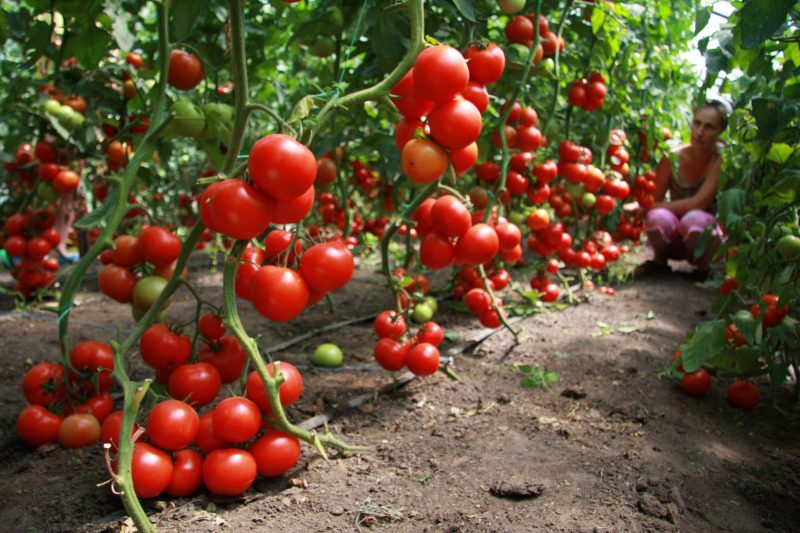
By structure are distinguished:
- Stem - low bushes with a thickened stalk with shoots, which are covered with medium sized corrugated leaf plates on short petioles.
- Non-standard - tomatoes with thin stems that lie in the fruiting phase, with large slightly corrugated leaf plates.
- Potato-like - rare tomatoes, distinguished by leafy plates similar to potato.
In accordance with the period of ripening of the fruit are allocated:
- early ripening;
- mid-season;
- medium late;
- late ripening.
Early ripe varieties
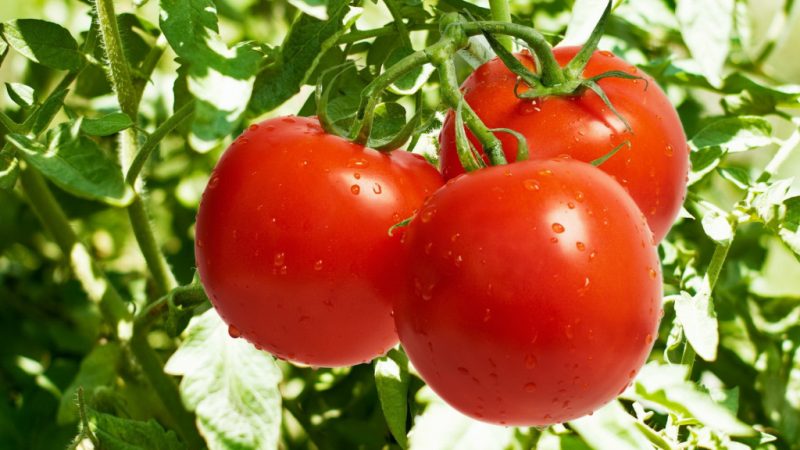
Most popular are:
- “White filling” is a productive variety characterized by rather low bushes that do not require pinching, on which bright red fruits with a fleshy structure weighing up to 130 g ripen.
- “Soil Gribovsky” - a distinctive feature of the variety is resistance to disease and drought.However, in wet summers, late blight is possible. Thanks to their cold resistance, seeds can be sown directly in open ground. The mass of rounded or rounded flat fruits reaches 100 g.
- "Sparkle" is a tomato variety whose bushes, with medium branching, give a large yield of tender fruits weighing up to 110 g.
Mid-season and mid-late grades
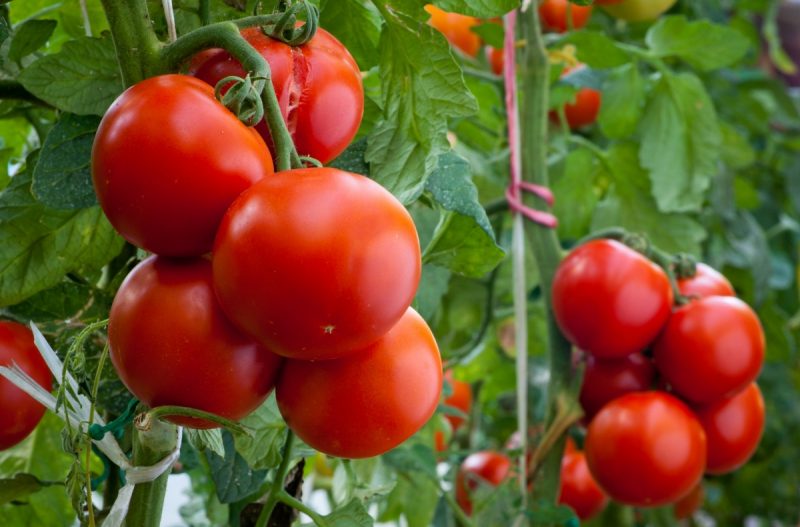
The growing season of tomatoes of these varieties varies from 100 to 130 days.
- "Novelty of Transnistria" is a medium-late variety distinguished by high productivity and medium-height bushes on which bright red oblong fruits ripen up to 60 g in weight.
- “Fakel” is a high-yielding tomato, characterized by the massive ripening of fruits weighing up to 100 g on compact medium-sized bushes.
Late ripening varieties
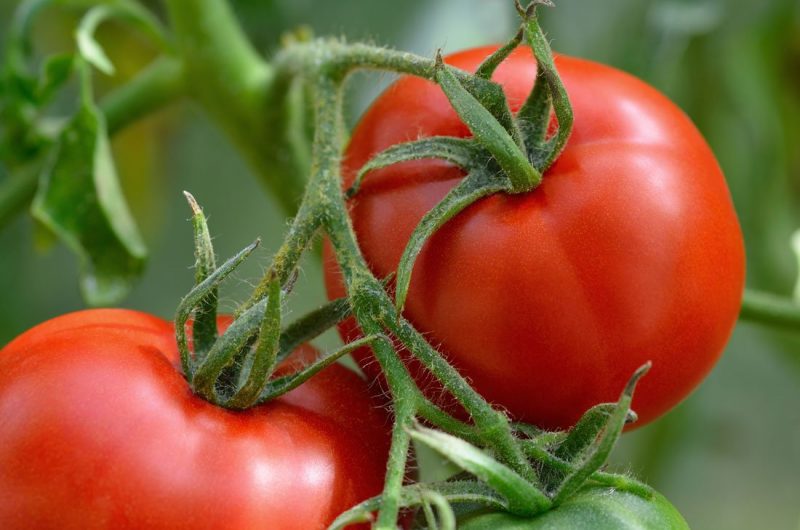
A suitable solution for growing in southern areas with a warm climate: the growing season takes 150 days. Late ripe tomatoes outperform other varieties.
- "Ermak" - a low-growing variety deserves attention due to the stability of large crops. Fruits that can remain on the bushes for a long period of time gain weight up to 140 g.
Selection of seeds for open ground

When choosing seeds for cultivation in open ground, the following factors must be considered:
- Zoning of the variety to climatic and soil features of the region - for example, cold-resistant varieties developed for the northern regions, prone to rapid aging under the bright sun and are unsuitable for cultivation in the southern regions.
- Ripening period is a parameter that plays a key role for the northern regions with a short summer, since the range of seeds for the Middle Strip is much wider.
- Possibility of conducting pinching - in case of its absence, it is worth stopping the choice on low-growing varieties that do not need a procedure.
- The purpose of the crop - large salad tomatoes with fleshy pulp, small tomatoes for preservation with a thick shell, universal and tomatoes with a dense structure for storage are distinguished.
It is interesting:tomatoes in the greenhouse
Growing seedlings for planting
The most productive way of growing tomatoes is carried out using preliminary distillation of seedlings as follows:
- Seedling containers with drainage holes that reduce the risk of developing a black leg are disinfected.
- The tank is filled with the purchased substrate or a mixture of sand and peat in equal parts, which are preliminarily calcined in the oven for about 15 minutes at a temperature of 200 ° C.
- Seeds disinfected in a 1% solution of potassium permanganate are distributed on the surface of the moistened soil according to the 1x3 cm scheme, after which they are sprinkled with a 1 cm thick layer of substrate.
- The box with seeds is covered with a film or glass and placed in a well-lit place near the heat source to maintain the temperature within 25-30 ° C.
- Soil moisture is constantly monitored: when it dries, the soil is moistened with a spray gun, and in case of waterlogging, it is aired.
- Following the instructions, friendly shoots appear after 3-4 days.
- After the appearance of three true leaves, the strongest seedlings dive into the greenhouse for growing and hardening.
Important! The duration of the seedlings in seedling containers depends on the density of the sowing.
How to choose a purchased seedlings?
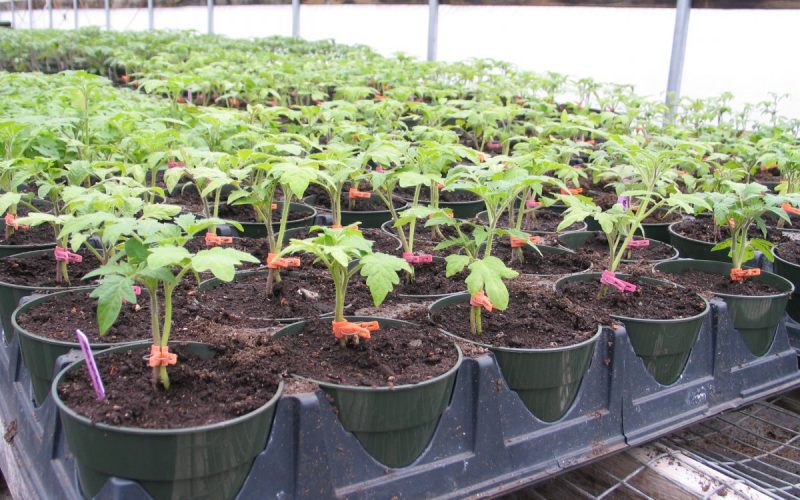
If there is no possibility or desire, you can purchase seedlings in a specialized store or from farmers, while paying attention to the following:
- Seedling age - it should not be less than 50 days, which corresponds to 4 pairs of real leaves.
- Freshness - do not purchase withered seedlings.
- Shoots - the seedling should have a strong, not elongated stem and well-developed leaves.
Preparing the soil for planting
When choosing a place for growing tomatoes, it is necessary to stop in the southern areas located on hills that are well lit and protected from the wind.
Tomatoes are recommended to be cultivated on light loamy soils with a neutral or slightly acidic reaction, which are pre-prepared:
- A week before transplanting, the plot is dug up and watered for disinfection with bleach, at the rate of 2 liters per 1 m2.
- Then the plot is fertilized with organic and mineral fertilizers with a spread rate of 1 m2 per bucket of peat, humus, sawdust, 50 g of superphosphate and 500 g of ash.
Planting tomatoes in open ground
When 4 pairs of leaflets are formed on seedlings hardened by systematic airing, the time for carrying out the main planting work is suitable.
How and when to plant?
The procedure for planting seedlings in open ground is carried out from the first half of May to the first half of June, depending on the variety and climatic conditions of the region according to the following scheme:
- Seedlings are hydrated.
- Beds are marked according to the scheme 60x60 cm for tall bushes and 40x50 for more compact.
- Wells 30 cm deep are filled with water.
- After complete absorption of water, seedlings with a moistened rhizome in an earthen coma are placed in a recess and filled with soil with the addition of humus.
- The earth in the near-stem circle is compacted and moistened 1-2 liters under each bush.
Attention! There are options for planting tomatoes for the winter, however, when using them, the gardener hopes for good luck more than agricultural machinery.
After what crops can I plant?
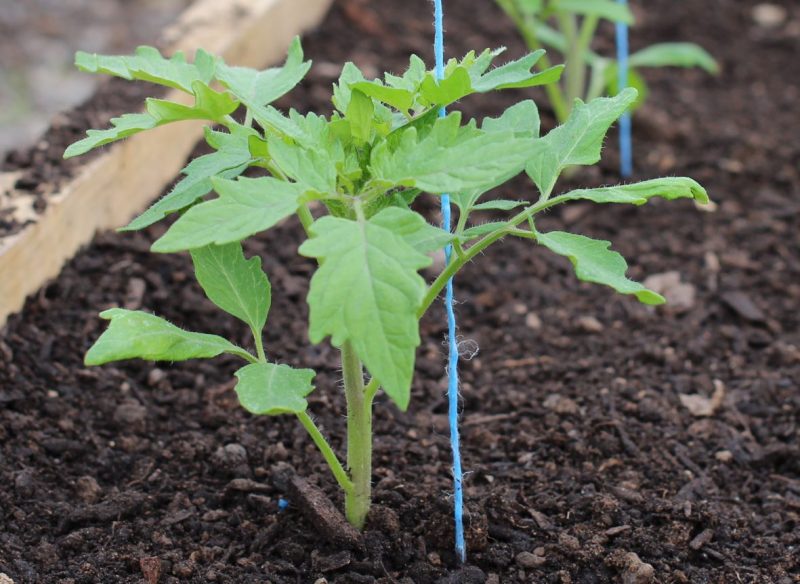
In order to get a good harvest every year, one should not neglect organizational and economic measures, which include crop rotation. Tomatoes show good results in areas where legumes and small seeds were grown last season. Bad predecessors are all members of the solanaceous family (potatoes, peppers, eggplant, tomatoes).
Tomatoes: Care
Caring for tomatoes in the open field is the key to a large crop, so it should be systematic.
Watering
Tomatoes react negatively to waterlogging, which provokes the development of fungal diseases.
Watering is carried out in the afternoon with warm, standing water under the root of the plant:
- Before the ovary forms, the soil is slightly moistened to avoid drying out.
- When forming the ovary, watering is carried out once a week at the rate of 1 liter under the bush.
- In the fruit filling phase, the water volume increases to 2 l, and the interval between irrigation is reduced to 5 days.
Advice! If possible, it is better to use drip irrigation, the standardization of which will not allow the development of late blight or apical rot.
Weeding and cultivation
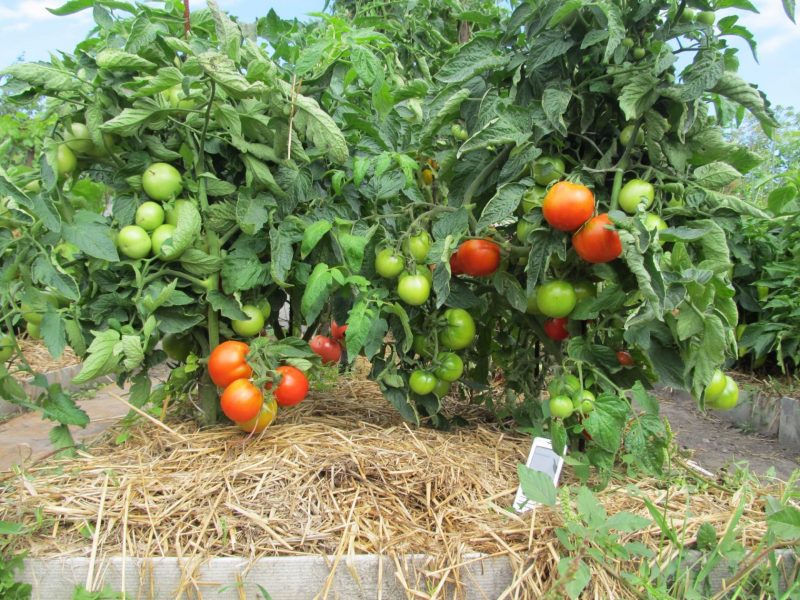
Important measures of comprehensive care are the systematic removal of weeds and cultivation after irrigation.
Top dressing
Representatives of solanaceae are fed twice a month with a working fluid of 15 g of ammonium nitrate, 50 g of superphosphate and 30 g of potassium, diluted in a bucket of water, with a consumption rate of 1 liter per instance.
Important! When preparing a complex solution, it is not allowed that the proportion of nitrogen exceed the specific gravity of potassium and phosphorus.
How to tie tomatoes in the open ground?
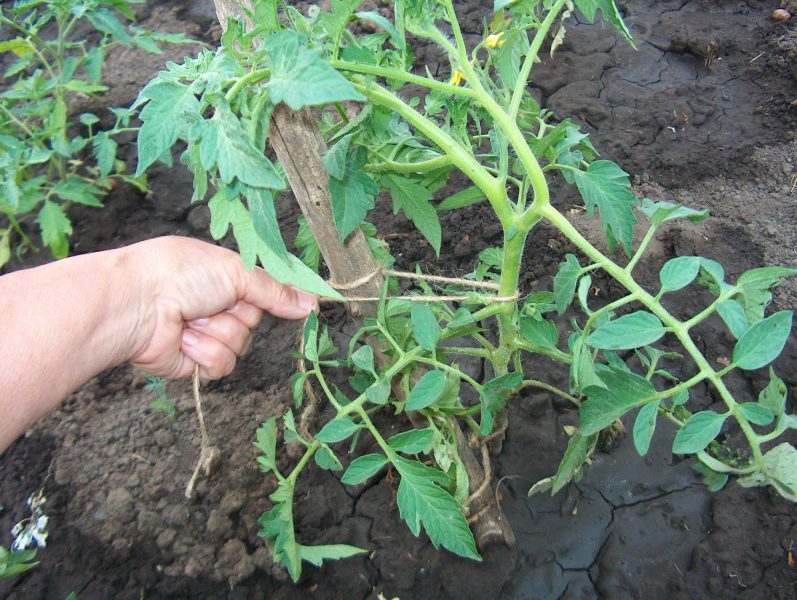
After transplanting seedlings, a peg is installed near each plant, the height of which should not be less than 140 cm.
- The support is driven into the ground to a depth of 40 cm from the north side at a distance of 10 cm from the bush.
- In the phase of intensive growth, the tomatoes are not tightly tied with twine to the support.
- As the culture develops, the garter rises higher.
Tomato formation: how to pinch?
To obtain more fruits, a bush is formed: one central stem remains, and the extra shoots are removed. Sprouts emerging from developing brushes are also removed by simple pinching. In this case, stepsoning should be carried out systematically.
Pest and Disease Control
A rich harvest of tomatoes will help ensure timely protection of plants from harmful organisms. Among the diseases that are often manifested during the growth of the culture, late blight, apical and gray rot, as well as fusarium wilt, are distinguished. For effective control, fungicidal chemicals are used: Quadris, Ridomil Gold and other analogues. Of the pests on tomatoes, a spider mite and aphids are noted, which can be protected from preventive spraying of bushes with an insecticide.
The main problems associated with growing
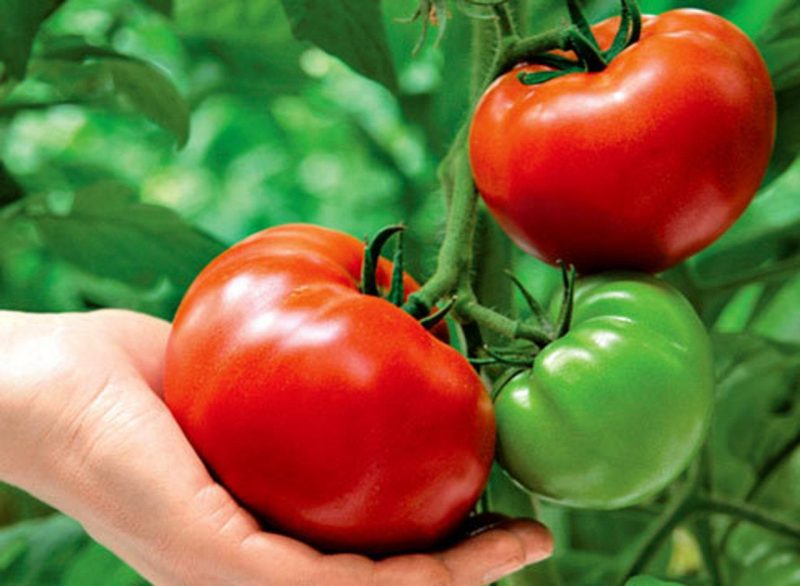
When growing tomatoes, gardeners often encounter difficulties that are caused by the most common reasons:
- low-quality seed;
- improper bush formation;
- late stepsoning;
- hauling the central shoot of the plant when tying;
- malnutrition of tomatoes;
- non-observance of the processing time;
- violation of crop rotation.
Harvesting and storage
After the appearance of ripeness in ripe fruits, you can begin to harvest. There are situations when the collection must be done earlier, then you can cut off the browned fruits and put them in the boxes where they will finish. Since ripening can occur within one day or a week later, the fruits in the crates are inspected constantly. Storage of tomatoes is carried out in boxes where the vegetable is stacked with the stalks down. Tanks are installed in a place with room temperature, where there is no access to direct sunlight.
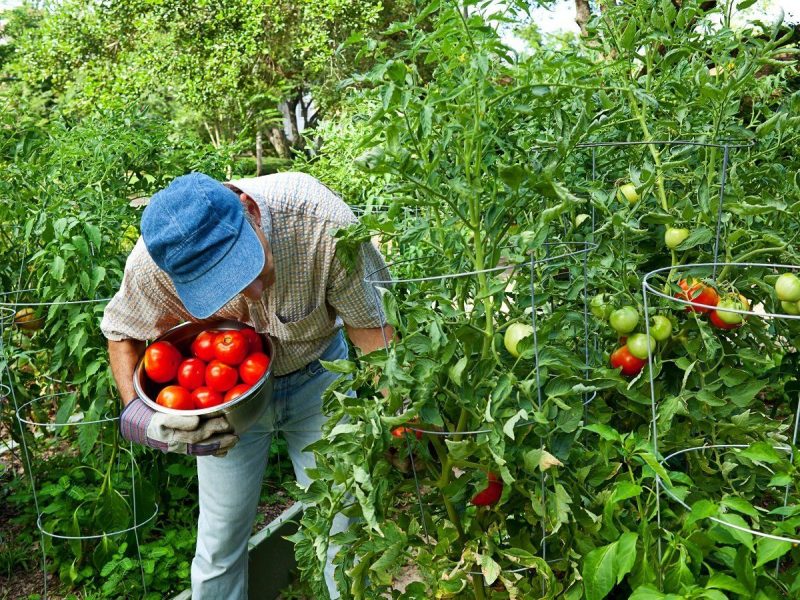
So, with the right choice of variety, observing the measures during the comprehensive care measures, the gardener can not only enjoy juicy fruits in salads, but also make a variety of preparations using tomatoes for the winter.












